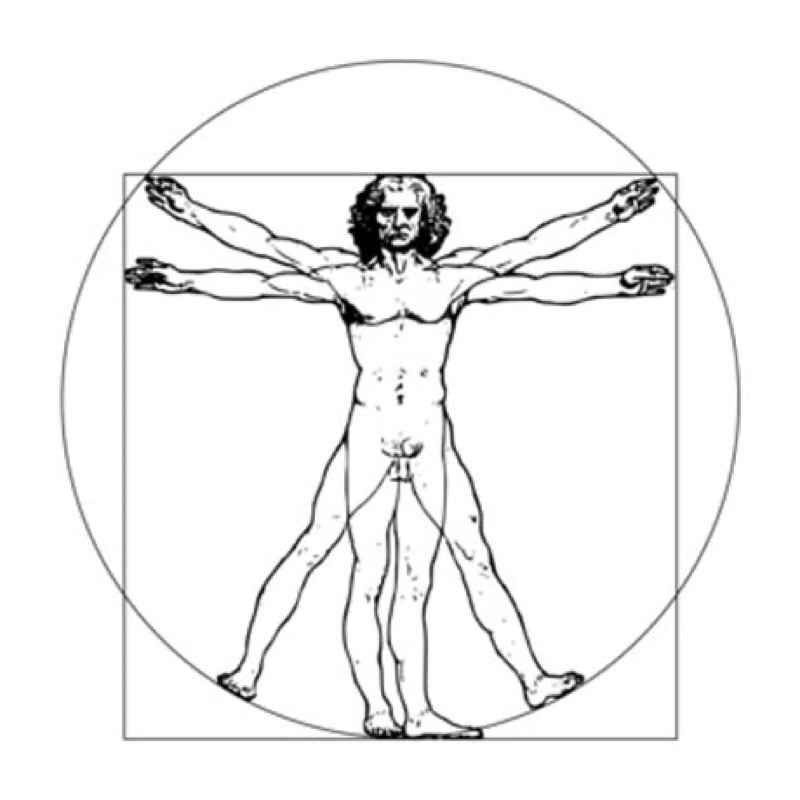Drawing a well-proportioned human body freehand requires a bit of training. Practice regularly: You will be amazed at how fast you progress. To your pencils!
- Home
- Expert advice
- Drawing: Human proportions

1. Drawing a silhouette
The Vitruvean Man: This is the "perfect man" drawn by Leonardo da Vinci in 1490 in his still famous sketch. By drawing the body human as geometric forms, he showed the proportional relationships between its various limbs.
Nowadays, more simply, we use head height as our unity of reference. Total body height is equal to eight times head height.
Drawing a man using the following equivalences for each part of the human body:
Body = 7 to 8 x head.
Leg = 4 x head.
Arm = 3.5 x head.
Trunk = 3 x head.
Shoulders = 2 x head.
Hand = 1 x head (or a little less).
Neck = 1 x hand.
Foot = 1 x forearm = ½ arm.
2. And for real?
To get an idea closer to reality, do the partitioning yourself:
- On the photo of a standing person (that is, visible from head to toes), measure the size of the head (from the top of the skull to the chin).
- Copy that measurement all the way down the body by drawing horizontal lines. You will notice a slight difference compared to the model, but the partitions are essentially the same.
Memo
For children, proportions are different from adults. The younger the child, the more room its head takes.
For a 6 year old child, body height equals 6 times its head height.
For a 12 year old child, it is 7 times.
What you need to know
French has an expression "Quel canon" ["What a canon!]said about attractive looking people. This expression comes from Ancient Greece. Canon in both English and French refers to the norm for calculating the proportions of the "perfect man." Of course, you don't need to follow it to the letter, but it is a good guide.
Recommended product:
XL® Sketch
See also :
Drawing
Drawing: Determining proportions
Explore more tutorials on this technique
Drawing
The basics of good inking
Drawing
Drawing a Christmas Pin-Up
Drawing
Composing a still life
Drawing
Composing Landscapes
Drawing
The travel album
Drawing
Paint and Draw Outdoors
Drawing
Drawing: Secrets of perspective
Drawing
Color Basics
Drawing
Hatch drawing
Drawing
Eraser drawing
Drawing
Drawing a face
Drawing
Drawing: Stumping
Drawing
Architectural drawing
Drawing
Drawing a line
Drawing
Drawing: Determining proportions
Drawing
Drawing: Selecting your material
Drawing
Preparing your Drawing material
Drawing
Choosing your drawing media
Drawing
Drawing: Create a sketchbook
Drawing
Drawing: shading and light
Drawing
Select your drawing paper
Drawing
The 6 essential steps in drawing
